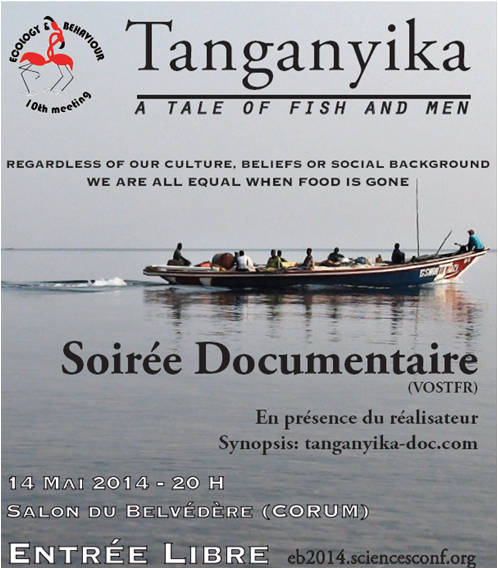
Planning > Social Events
Tuesday 13th of May
20:30 : Public Lecture (in French)
Buttes en terre, bottes en caoutchouc : Ecologie, archéologie et ethnobiologie
dans les savanes inondables de l’Amérique du Sud et d’Afrique
By Doyle McKey
Summary: Les savanes saisonnièrement inondées de l’Amérique du Sud et de l’Afrique recèlent une diversité de paysages « à buttes » montrant une hétérogénéité topographique d’une régularité frappante. Ces paysages sont tous très peu étudiés. Certains sont des constructions humaines—des champs surélevés sur lesquels les gens ont pu planter des cultures ne tolérant pas l’inondation. En Amérique du Sud, où l’agriculture sur champs surélevés a largement disparu après la conquête européenne, les vestiges de ces anciens paysages agricoles sont étudiés par les archéologues. En Afrique, l’agriculture sur champs surélevés persiste aujourd’hui, mais elle n’a pas attiré l’attention d’anthropologues. Sur les deux continents il existe aussi des paysages « à buttes » d’origine apparemment naturelle. Malgré les questions fascinantes soulevées par la régularité spectaculaire de ces paysages, ils n’ont guère piqué l’intérêt des écologues et leurs origines restent mystérieuses. Nos études en cours sur les paysages « à buttes » d’origine humaine et naturelle suggèrent des liens entre ingénieurs du sol humains et non-humains, et soulèvent des questions venant des domaines allant de l’écologie à l’ethnoagronomie. Ces paysages demandent pour leur compréhension des apports de plusieurs disciplines : l’écologie théorique, l’archéologie, l’anthropologie et l’agronomie. En plus d’apporter de la lumière sur des questions fondamentales, leur étude peut éclairer des voies vers l’intensification durable de l’agriculture dans un type de milieu qui subira dans les années à venir d’énormes pressions démographiques.
Bibliography
MCKEY, D., S. ROSTAIN, J. IRIARTE, B. GLASER, J.J. BIRK, I. HOLST & D. RENARD (2010) Pre-Columbian agricultural landscapes, ecosystem engineers and self-organized patchiness in Amazonia. Proceedings of the National Academy of Sciences of the United States of America 107: 7823-7828.
RENARD, D., J. IRIARTE, J.J. BIRK, S. ROSTAIN, B. GLASER, D. MCKEY (2012). Ecological engineers ahead of their time: the functioning of pre-Columbian raised-field agriculture and its potential contributions to sustainability today. Ecological Engineering 45: 30-44.
RENARD, D., J.J. BIRK, B. GLASER, J. IRIARTE, G. GRISARD, J. KARL, D. MCKEY (2012). Origin of mound-field landscapes: a multi-proxy approach combining contemporary vegetation, carbon stable isotopes and phytoliths. Plant and Soil 351: 337-353.
RENARD, D., J.J. BIRK, A. ZANGERLE, P. LAVELLE, B. GLASER, R. BLATRIX, D. MCKEY (2013). Ancient human agricultural practices can promote activities of contemporary non-human soil ecosystem engineers: a case study in coastal savannas of French Guiana. Soil Biology and Biochemistry 62: 46-56.

Place: Salon du Belvédère (Corum)
-
Wednesday 14th of May
Afternoon: Excursion
20:00: Documentary
Tanganyika - a tale of fish and men

Presented by the director: Pierpaolo Brena
Synopsis: Lake Tanganyika is the fish-richest lake in the world, and the second largest one in volume. Its unique ecosystem has been forged by over 10 million years of evolution, but is nowadays threatened by overfishing and habitat destruction. Fish stocks are declining. More than an ecological crisis, the disappearance of this unique resource is likely to bring about the collapse of the fragile human equilibriums that have developed around lake Tanganyika. Scientists from the northern hemisphere, African industrialists and local populations cohabit on the banks of the lake. Each of them maintains a special relation with lake Tanganyika and the halieutic resources that it is home to. Although they come from contrasted cultural and social backgrounds, each of them is affected by the scarcity of the fish. Through their different perspectives on lake Tanganyika and their perception on the decline of the fish stocks, the movie traces the triggering factors of this ecological and human crisis. The sustainable managing of Tanganyika appears to be as much about the scientific approach of its resources as it is about understanding the populations that rely on it.
Place: Salon du Belvédère (Corum)
Thursday 15th of May
18:30: Closing Gala

